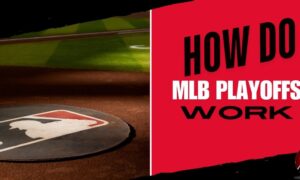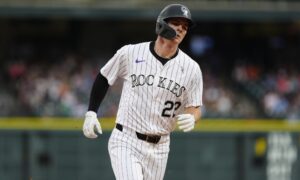As I joined my first fantasy baseball league since high school, I thought I would take a more analytical approach to draft and searching for key players throughout the year. What types of statistics should fantasy baseball players be paying attention to? Are there any predictive statistics from year to year?
Read on for an analysis of statistics that fantasy baseball players should look out for and others they should know that don’t provide predictability.
Batting Average
Batting Average is an important statistic in baseball but has not been shown to predict how well a player will play. It has been shown that on-base average has more of a relationship with runs scored, which ultimately is what fantasy owners are looking for out of their batters.
Batting Average numbers can also be misleading, as certain factors like different ballparks, fielding, and weather can all play roles in inflating or deflating any given player’s batting average. Batting averages can also fluctuate greatly throughout a player’s career and, even more commonly, experience cold and hot stretches throughout the season.
A player’s command of the strike zone can also indicate a future batting average than a player’s batting average statistics. Additionally, with recent rule changes to benefit hitters via the ban on the shift, there is sure to be an increase in those players’ batting and on-base numbers who would have commanded such a look from defenses.
RBIs
Runs Batted In (RBIs) also depend exceedingly on hitting conditions and situations. Runs batted in require players to be on base before the given player takes the plate for the bat. The year-in and year-out reliability of such a statistic is not realistic.
A good hitter will produce RBIs if he is in a good spot in the order and on a team that consistently puts runners on base. A general team that comes to mind that meets those requirements is the Yankees, who spend a colossal amount of money on their offense and own one of the most hitter-friendly parks in the MLB.
Batting Average on Balls in Play (BABIP)
Batting Average on Balls in Play measures a player’s batting average on all non-home run balls. BABIP is one of the most used advanced statistics in baseball.
The MLB average BABIP is .300. Thus, players with a BABIP of .350 may, in fact, be lucky, and fantasy GMs might be able to predict a player’s batting statistics will regress in the future. The opposite can be expected if a player has a BABIP below the MLB mean.
Fantasy players should be checking this statistic as it helps fans and statisticians view how a player is performing against how they are theoretically expected to perform.









